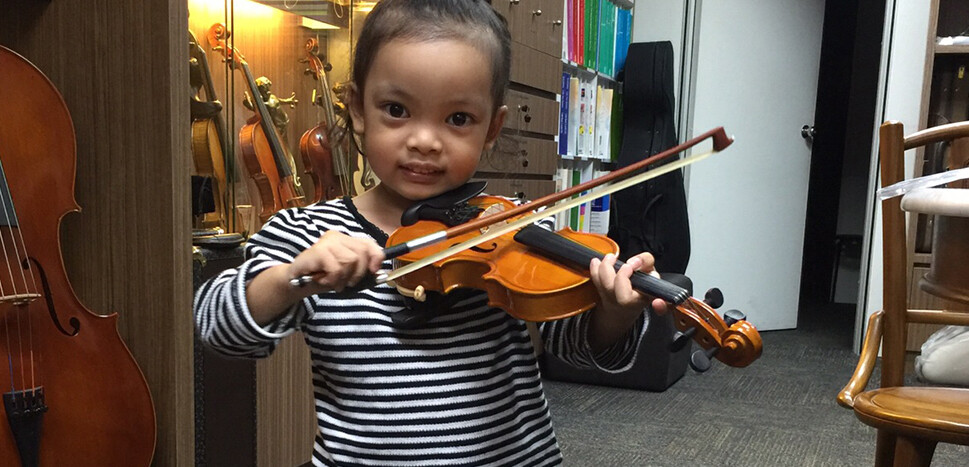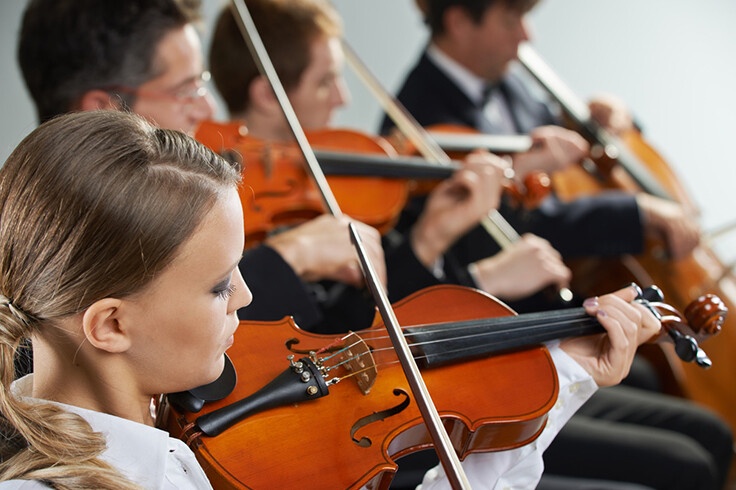If you are someone who is willing to learn violin, it is time to take the right actions accordingly. However, even when taking lessons can be a feasible choice for you, it is crucial to have knowledge of the ways to overcome challenges. It is crucial to have proper expectations that learning an instrument like a violin will not be an easy journey. As violin strings make it hard to play the sound, it might take a lot of time and effort to actually play this instrument. Learning violin from an educated or experienced person will make the journey much easier and more relevant.
Therefore, if you have started your journey to becoming a while, take a look into this to understand the ways you can overcome the challenges. But first, we will take a look at the most common challenges that you face while learning this instrument.

Challenges you face while learning violin
Finger placement and intonation:
One of the most challenging aspects of playing the violin is achieving precise finger placement on the violin strings for accurate intonation. Unlike other instruments, the violin does not have frets or keys to guide your fingers. You have to rely on your ear and muscle memory to hit the right spots on the fingerboard. You need to practice scales and exercises regularly to improve your finger placement and intonation. These will help you train your fingers to land on the correct pitches and intervals. You can also use a tuner, a metronome, or a drone to check your intonation and adjust your fingers accordingly. Another tip is to mark the fingerboard with small stickers or tapes to indicate where your fingers should go.
Bow Control:
Another important skill for violinists is controlling the bow across the violin strings to produce consistent tone and dynamics. The bow is the tool that brings the violin to life, and you need to master how to use it effectively. Bow control involves several factors, such as bow speed, pressure, placement, direction, and distribution. To improve your bow control, you need to practice regular bowing exercises and seek guidance from a teacher. Some of the exercises you can try are long tones, slurs, staccato, legato, spiccato, and martelé. These will help you develop your bowing technique and expression. You should also pay attention to your bow grip, bow arm, and bow hair and make sure they are in the optimal position and condition.
Posture and ergonomics:
Maintaining the correct posture while holding the violin and bow is crucial to avoiding discomfort and injuries. Poor posture can cause tension, pain, fatigue, and even damage to your muscles, joints, and nerves. A good posture, on the other hand, can enhance your comfort, relaxation, and performance. To maintain good posture, you need to regularly check your posture and seek guidance from a professional. You should check your head, neck, shoulders, back, chest, arms, wrists, hands, fingers, legs, and feet. You should also make sure that your violin and bow are properly fitted and adjusted to your body size and shape. You can use accessories such as a shoulder rest, a chin rest, a rose, and a mute to improve your posture and ergonomics.
Patience and persistence:
Progress on the violin can be slow, which can be discouraging. The violin is one of the most difficult instruments to learn, and it takes a lot of time, effort, and dedication to master it. You may encounter many challenges, frustrations, and setbacks along the way. To overcome these, you need to have patience and persistence. You need to maintain a consistent practice routine, set achievable goals, and celebrate small milestones. You should also seek feedback, support, and inspiration from your teacher, peers, and role models. You should also remember why you started playing the violin in the first place and what you hope to achieve with it. By having patience and persistence, you will eventually see improvement and enjoy playing the violin.
Reading Sheet Music:
Learning to read sheet music and interpret musical notation takes time. Sheet music is the language of music, and it contains a lot of information and symbols that you need to understand and follow. Reading sheet music can help you learn new pieces, play with others, and express your musical ideas. To learn how to read sheet music, you need to start with simple pieces and gradually progress to more complex ones. You need to learn the basics of musical notation, such as the staff, the clef, the key signature, the time signature, the notes, the rests, the accidentals, the dynamics, the articulations, and the expressions. You also need to practice sight-reading, which is reading and playing a piece of music at first sight. You can use apps, books, or websites to help you learn and practice reading sheet music.
Ear Training:
Developing a good ear for pitch and musicality is essential for violinists. A good ear can help you play in tune, improvise, compose, and appreciate music. Ear training is the process of improving your listening skills and your musical awareness. To develop a good ear, you need to practice listening to different violin strings and playing in tune with a tuner or piano. You also need to practice singing, humming, or whistling the melodies, harmonies, and rhythms that you hear or play. You also need to practice identifying and reproducing different musical elements, such as intervals, chords, scales, modes, and patterns. You can use apps, books, or websites to help you learn and practice ear training.
Sore Fingers and Neck:
Initially, pressing the violin strings can cause discomfort to your fingers and neck. The violin strings are made of metal or synthetic materials, and they can be hard and sharp on your fingertips. The violin also requires you to hold your head and neck in a certain position, which can cause strain and stiffness. To prevent or reduce soreness, you need to gradually build finger strength and consider adjusting your chin and shoulder rest for better comfort. You can also use fingerboard tape, finger protectors, or finger cots to cushion your fingers. After playing, you can also massage, stretch, or ice your fingers and neck. You should also take breaks and rest your fingers and neck regularly.
Performance Anxiety:
Nervousness before performances can affect your playing. Performance anxiety is a common phenomenon that affects many musicians, especially violinists. It can cause symptoms such as shaking, sweating, racing hearts, dry mouth, and memory lapses. Performance anxiety can also affect your confidence, concentration, and expression. To overcome performance anxiety, you need to practice in front of friends or family, gradually exposing yourself to performing. You also need to prepare well, rehearse thoroughly, and warm up properly before performing. You also need to adopt a positive mindset, focus on the music, and enjoy the experience. You can also use relaxation techniques like breathing, meditation, or visualisation to calm your nerves and reduce stress.

How do I overcome the challenges?
Structured Practice Routine:
Establishing a structured practice routine is crucial for improving your violin skills. You should dedicate time each day to work on specific aspects, such as finger placement on the violin strings, bowing techniques, and intonation. You should also vary your practice materials and methods to keep yourself engaged and challenged. Consistency is key; even short daily practices can yield better results than sporadic, lengthy sessions. Try to practice at the same time and place every day, and set a timer to track your progress. A structured practice routine can help you develop good habits, discipline, and confidence as a violinist.
Private Violin Lessons:
Enrolling in private violin lessons with a skilled instructor can significantly expedite your progress. A private teacher can provide personalised guidance, correct your posture and technique, and tailor exercises to address your weaknesses. They can also monitor your finger placement on the violin strings and your bow control and give you instant feedback and tips. A private teacher can also help you choose the right violin, strings, and accessories for your level and style. They can also introduce you to new pieces, genres, and composers that suit your interests and goals. Private violin lessons can be a great investment for your musical journey.
Utilize violin apps and online resources:
Leverage technology by using violin apps and online resources to supplement your learning and practicing. These offer interactive tutorials, virtual sheet music, and metronomes that can assist you with various aspects of playing the violin. Online resources like Violin Lab and Violin Online can provide you with videos, articles, and exercises on topics such as posture, technique, theory, and repertoire. Utilizing violin apps and online resources can make your learning more fun and convenient.
Join a Violin Community or Orchestra:
Being part of a violin community or orchestra can boost your motivation and improve your skills. You can interact with fellow violinists, share your experiences and challenges, and learn from each other. You can also play in a group, which can help you develop your ensemble skills, such as listening, blending, and following. You can also receive feedback and advice from more experienced players, such as teachers, mentors, or conductors. Joining a violin community or orchestra can also expose you to different styles, genres, and cultures of music. Being part of a musical group can be a rewarding and enriching experience.
Record and self-assess your playing:
Recording yourself while playing the violin allows you to review your progress objectively. You can listen to your recordings to identify areas that need improvement, such as bowing consistency, intonation, or expression. You can also compare your recordings to previous ones or to professional recordings to see how much you have improved. Recording and self-assessing your playing can help you pinpoint areas for focused practice and also highlight your strengths and achievements. You can use a simple device, such as your phone or a recorder, to record yourself and listen to your recordings with a critical but positive ear.
Stay patient and persistent:
The journey of learning the violin can be challenging, but maintaining a patient and persistent mindset is vital. You should celebrate small victories, such as mastering a new piece, playing in tune, or improving your finger placement on the violin strings. You should also remember that progress may not always be linear and that you may encounter plateaus or setbacks along the way. You should acknowledge that mistakes are part of the learning process and view them as opportunities for improvement. You should also keep your passion for music alive and enjoy the process of learning and playing the violin. You’ll overcome the challenges and excel as a violinist with time and dedication.
Conclusion:
So now that you have properly understood the challenges that you will face while learning this instrument, it will become easier for you. As you are well aware of the hurdles, you will be able to take action accordingly. However, if you are in search of an institution providing great violin lessons, you can choose Stradivari Strings. Remember that violin strings might be hard on you, but with this institution, it will be a little bit easier.


No comments yet